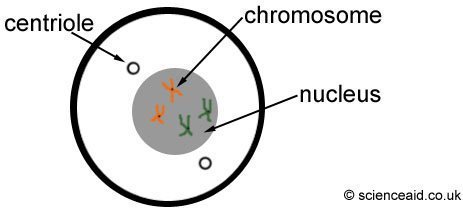
Homologous chromosomes can exchange parts in a process called "crossing over. Chromosomes condense, line up, are pulled to the poles, and the nucleus reforms and DNA relaxes. Kinetochore microtubules shorten, pulling sister chromatids to opposite poles, polar microtubules elongate, lengthening dividing cell. Microtubules align chromosomes along metaphase plate. In Metaphase I, homologous chromosome pairs line up. Nuclear membrane breaks down, chromatin condenses, mitotic spindle forms and attaches to kinetochores. This shuffling process is known as recombination or "crossing over" and occurs while the chromome pairs are lined up in Metaphase I. Each sibling is 50% mom and 50% dad, but which 50% of each can vary in the siblings. But this happens independently for each trait, so just because you got your dad's brown eyes doesn't mean you'll get his blond hair too. Each sperm and egg will end up with either B or b from mom and either B or b from dad.

This leads to four possibilities: You could get B from mom and B from dad, or B from mom and b from dad, or b from mom and B from dad, or b from mom and b from dad. Imagine, for example, that eye color was controlled by a single gene, and that mom could have B, the allele for brown eyes or b, the allele for blue eyes, and dad could also have B or b. About 90 percent of a cells time in the normal cell cycle may be spent in interphase. But each non-identical-twin child of these parents ends up with a different combination. Before a dividing cell enters mitosis, it undergoes a period of growth called interphase.

You ended up with half of mom's paired genes and half of dad's paired genes. Your parents each have at least one pair of alleles (versions of a gene) for every trait (and many pairs of alleles for each polygenic trait).


 0 kommentar(er)
0 kommentar(er)
